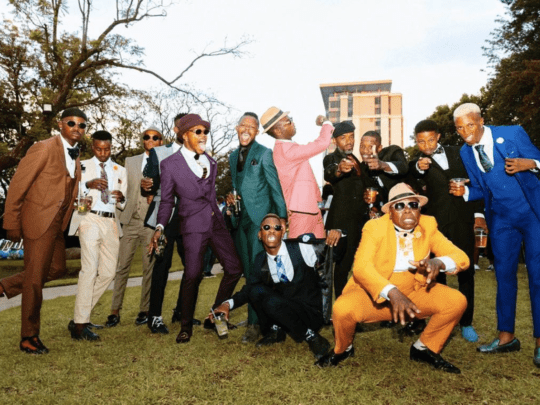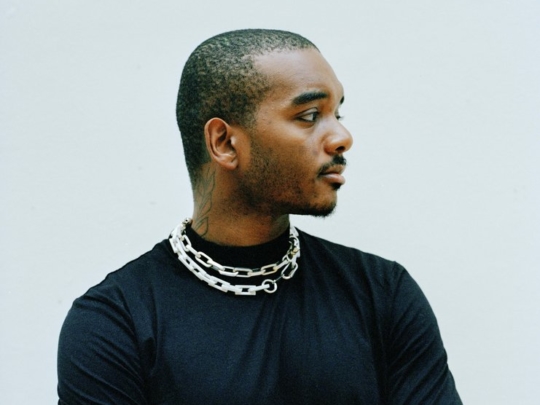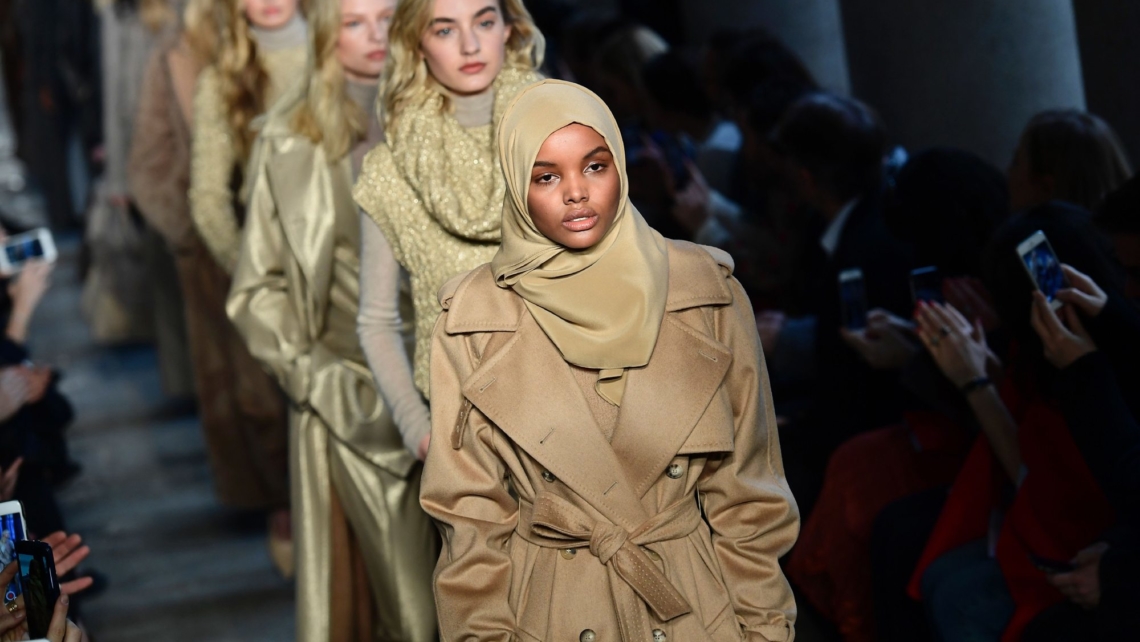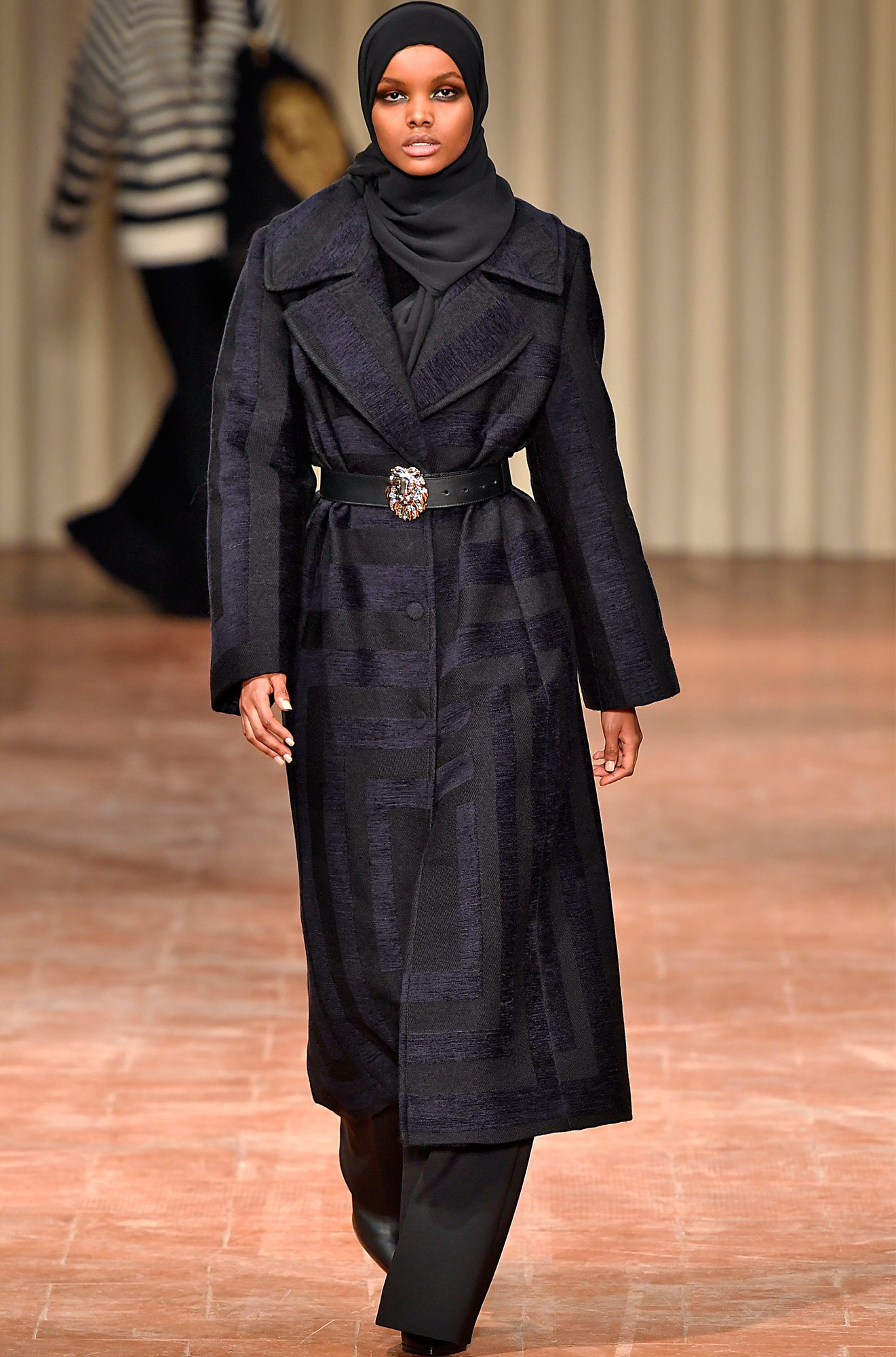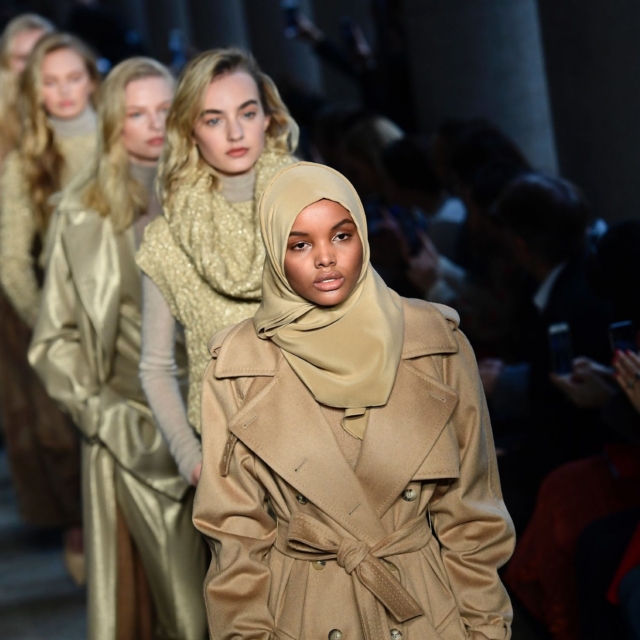Halima Aden knows a thing or two about making waves—and at just 19 years old, she knows how to ride each and every one with confidence. Her meteoric rise to fame in the fashion industry, however, started merely as a ripple in St. Cloud, Minnesota. “I became my town’s first Muslim homecoming queen,” she told me backstage at Max Mara (her third show this season after walking Yeezy and Alberta Ferretti). “Even though it’s such a small thing—it’s homecoming, it’s not a big deal—I saw how much it brought the community together.” What makes this Cinderella story so special is not that Aden took home the crown, but she did it while staying true to herself and abolishing any and all Disney princess stereotypes and standards along the way. And after breaking down barriers at the local level, she took things a step further at the Miss USA pageant, garnering international attention for strutting the stage in a hijab and burkini (the first woman ever to do so at the time-honored event infamous for its scantily clad contestants).
Despite remaining firmly in it, the spotlight is not what Aden craves—it’s the “conversation” surrounding her history-making feats that’s her “favorite part.” The Somali-American born in a Kenyan refugee camp (she immigrated to the States at the age of six) makes people think and reconsider their deep-rooted stereotypes and prejudices. She sparks discussion and brings people of all races and religions together better than the United Nations—and she does it all with a beaming smile proudly baring braces at a time when the world (especially America) feels increasingly fractured. And yes, winning homecoming crowns, walking beauty pageants, and sashaying down runways in New York and Milan alongside supermodels isn’t exactly saving lives, but it is changing plenty of minds. For those who see fashion as a frivolous, surface-level industry, Aden is proving that it’s a strong platform from which to send an important political and personal message to the entire globe.
Ultimately, however, Aden wants what she’s doing to be “normalized.” She’s happy to put a sizable crack in the glass ceiling and pave the way for other Muslim girls to follow in her footsteps, but said that seeing a woman in a hijab on a high fashion runway “shouldn’t be shocking.” As Ian Griffiths, creative director of Max Mara, told the Financial Times: “I have many international customers and many live in the Middle East, where there is no contradiction between wearing a hijab and the concept of luxury.” Not to mention, the numbers are there to support Aden’s hopes and dreams for the future: Reuters reported that Muslims spent $266 billion on clothing and footwear in 2013 (more than the total spending of Japan and Italy combined), and that figure is expected to grow to $484 billion by 2019.
Here, Aden talks braces, bulldozing beauty standards, and why she’d rather create her own category than “blend in.”

